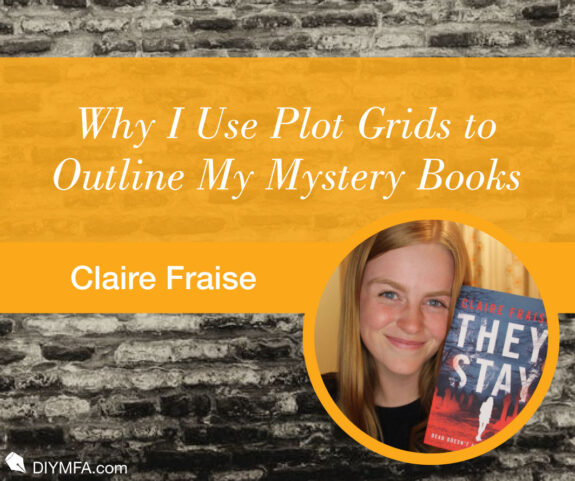Plot grids are by far my favorite method of outlining and I can’t write a book without using them. I’m a hardcore plotter. It’s impossible for me to finish a book without knowing where I’m going. I also write mysteries and thrillers, and books in this genre can become overwhelming if a writer doesn’t have a way to keep track of all the clues and red herrings thrown into the plot.
I used to get bogged down in the nitty-gritty details of a story. I’d lose motivation halfway through because I forgot all the clues I already put in and I didn’t know where I was going. I ached for a way to see my books from a bird’s-eye perspective. Plot grids allowed me to do just that.
What is a plot grid?
A plot grid is an outline that exists in a grid form. I first learned about them after stumbling upon an article about the way JK Rowling outlined the Harry Potter books. Rowling drew the grids on paper and filled them in by hand. Here is the one she made for The Order of the Phoenix:

(Photo credit: https://blog.paperblanks.com/2013/05/j-k-rowling-book-outline/)
I make my plot grids in Excel or Google Sheets because I make changes to mine all the time and constantly rewriting them by hand would drive me insane. Each column in a plot grid corresponds to a plot or subplot in your novel, and each row corresponds to a chapter.
I like using plot grids for a myriad of reasons, but there are three in particular that really set them apart.
How Plot Grids Help My Writing
1. Allow me to see the big picture
Around the middle point in a draft, it’s easy for me to lose sight of where my story is going. I will go down rabbit holes. Explore tangents. Often, I’ll forget where I’m supposed to be going and lose track of all the clues in my mystery I have dropped before.
Plot grids help me stay focused on where I’m going. If I feel like I’m getting lost, I can always see what I need to include in every chapter to keep each plot and subplot moving forward. I can still explore in my drafts, but when I need to get back on track, I can do so easily.
2. Speed up drafting
I’m a plotter and love knowing where I’m going in a draft. Because I always know what I need to accomplish in a scene, I can get chapters written more quickly and my drafts are cleaner because I have already done a lot of the brainstorming and problem solving up front.
3. Help me not forget any subplots
Ever since I started using plot grids, I have not gotten as overwhelmed around the middle of a draft. I can keep track of where I am and where I’m going and things don’t get dropped, so my drafts don’t feel as out of control.
Plot grid outlines are still linear. The top of the grid corresponds to the beginning of your book and the bottom of the grid corresponds to the end. Each individual column lets you keep track of things like individual character growth, relationships, and clues pointing toward red herrings, so you can make sure nothing slips through the cracks.
Even though plot grids work well for me, they do not work for everyone. Some writers find that outlining takes a lot of fun out of the process, and if this is you, then you won’t like plot grids, but they make my plotter brain happy.
I have made many videos on my YouTube channel explaining what plot grids are and how to create them for your story. If you are interested in learning more about them, visit my channel Write with Claire Fraise.

Claire Fraise is an award-winning author of ghostly young adult thrillers. Her books include the They Stay Series and her debut novel Imperfect which she published when she was 16. When Claire is not writing, you can find her crocheting amigurumi animals, baking gluten-free desserts, or hanging out with her dog. Even though it goes against every introverted bone in her body, she is on social media.







